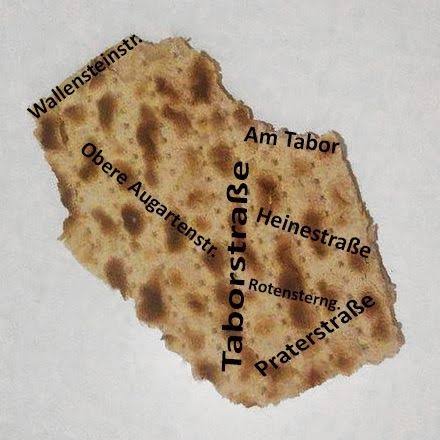Experience Travel Insights
Vienna’s Matzah Island: The Story of a Jewish Heart, Lost and Reborn
by Long Lin-Maurer • October 12, 2025

The Island Between Two Rivers: Uncovering Vienna’s Matzah Island
“When someone returned from a trip to Vienna, he was asked what he saw: ‘I saw the Nordbahnhof (North Station) and the Praterstern and the Schiffgasse (The Synagoge) and the Carltheater.”
“And you didn’t see the Hofburg (Imperial Palace) and the Burgtheater?”
“No, I didn’t get to the outer districts.”
In a city defined by its imperial grandeur, its waltzing rhythm, and the intellectual ferment of its coffeehouses, there exist layers of history that are not always visible on the surface. To truly understand Vienna, one must venture beyond the grand boulevards of the Ringstrasse and into its living, breathing districts. One such place is Leopoldstadt, Vienna’s Second District, an urban island nestled between the Danube River and the Danube Canal. For centuries, this district was the vibrant, beating heart of Viennese Jewish life, earning it the evocative and affectionate nickname, Matzahinsel—Matzah Island. This name, redolent of Passover and tradition, encapsulates a story of refuge, flourishing, persecution, and a quiet, resilient rebirth that is central to the identity of Vienna itself.
The Origins of Matzah Island: A Mandated Haven
The story of Matzah Island begins not with an embrace, but with a decree. In the 17th century, Vienna’s Jewish population, which had lived within the city walls, was forcibly relocated to this marshy, undeveloped land. This new, former Viennese ghetto, known as the Unterer Werd, became a self-contained community. Here, life in the early Leopoldstadt Jewish Quarter unfolded with its own rhythm, governed by its own laws and customs. It was a place of both confinement and community, a world apart from the Catholic imperial city.
The irony of Jewish history is never far in Vienna. In 1670, Emperor Leopold I expelled the Jewish population entirely. The main synagogue was converted into a Catholic church, and the area was renamed Leopoldstadt—the city of Leopold—in his honor. It was a brutal act of erasure. Yet, history has a longer memory than emperors. Within just a few decades, Jewish families began to return, drawn back by economic necessity. They settled once again in the district of Leopoldstadt, not by force this time, but by choice, transforming their former place of confinement into a place of belonging.
Come and experience travel!
Personally designed, seamlessly delivered – your journey, our expertise!
We are a boutique travel agency and consultancy specializing in Hub & Spoke Tours across Central Europe, the Benelux and the Dolomites.
A Golden Age: The Jewish Heart of Vienna Blossoms
By the late 19th and early 20th centuries, Leopoldstadt had blossomed into one of the most dynamic Jewish centers in Europe, a true Viennese Jewish community hub. It was far from a monolith; it was a rich tapestry of identities. Here, Orthodox Jews from the eastern provinces lived alongside assimilated, secular Viennese intellectuals who were shaping the very course of Western thought.
Walking through the streets of the Island of Matzah in 1910 would have been an immersion of the senses. The air would have carried aromas from kosher bakeries, the murmur of voices from bustling stalls at the Karmelitermarkt, and the sounds of children playing in the Prater. The district was home to over 30 synagogues and prayer houses, the most magnificent of which was the Leopoldstädter Tempel on Tempelgasse. A majestic Moorish Revival masterpiece, it was a proud symbol of the community’s confidence and its integral place in Viennese society. This was the Jewish heart of Vienna, a crucible of modernism where artists, writers like Arthur Schnitzler, and thinkers like Sigmund Freud contributed disproportionately to the city’s legendary cultural explosion.
The Rupture: The Holocaust and the End of a Viennese Era
The vibrancy of this world makes its destruction all the more devastating. The Anschluss of 1938, Germany’s annexation of Austria, marked the beginning of the end. The terror was swift. During the November Pogrom, or Kristallnacht, the Leopoldstädter Tempel, along with dozens of other synagogues, was set ablaze in a symbolic and physical act of annihilation. The streets that once buzzed with life became stages for public humiliation and violence.
From Leopoldstadt, tens of thousands of Viennese Jews were deported to concentration camps during the Holocaust. Apartments were seized, businesses “Aryanized,” and communities shattered. By 1945, a community that had numbered nearly 200,000 had been decimated. Matzah Island, once a beacon of Jewish culture, became a landscape of ghosts, its stories silenced, its buildings bearing the invisible scars of profound loss. To walk through the district today is to walk through a palimpsest, where the memory of what was is constantly written over by what is, yet never fully erased.
Come and experience travel!
We design bespoke travel experiences with a perfect balance of cultural depth, efficiency and comfort.
Specializing in seamless hub-and-spoke journeys, we create well-paced, immersive itineraries tailored to your interests.
A Quiet Renaissance in Vienna’s Jewish District Today
The post-war story of Leopoldstadt is one of quiet, determined resilience. While the community would never regain its pre-war size, Jewish life slowly returned. Today, Vienna’s Jewish District is once again the center of the community, albeit on a different scale.
Exploring Vienna’s historic Jewish neighborhood now reveals a different kind of tapestry. You can find kosher supermarkets, Jewish schools, and community centers. On Tempelgasse, a simple memorial of four white columns marks the footprint of the lost grand synagogue, a powerful reminder of both presence and absence. Throughout the district, small, brass-covered Stolpersteine (stumbling stones) are embedded in the pavement, bearing the names of former residents murdered in the Holocaust. Each stone is a small, personal act of remembrance.
Yet, Leopoldstadt is not a museum. It is a thriving, diverse, and fashionable district. The Karmelitermarkt is now a foodie paradise, its traditional stalls mingling with trendy cafes. The district is a microcosm of modern Vienna—creative, multicultural, and constantly evolving, a place where the echoes of the past inform a dynamic present.
To understand Matzah Island is to understand the complex soul of Central Europe. It is a story of immense cultural achievement and unspeakable tragedy, of deep-rooted community and forced dispersal, of devastating loss and the enduring power of the human spirit to rebuild. It is a journey that reveals how a place can be both a sanctuary and a ghetto, a cradle of modernism and a site of memory, forever an island of profound meaning in the heart of Vienna.
Come and experience travel!
Our expertise lies in uncovering authentic stories, hidden corners, and behind-the-scenes experiences that bring destinations to life.
We design customized mindful travel experiences that seamlessly integrate mindful eating and mindful indulgence. These experiences foster self-care and create transformational journeys that nurture mental well-being, promote sustainable travel, and strengthen family connections.
Exploring Vienna’s “Matzah Island”: Jewish Cultural Enclaves and Heritage
- Jewish Museum Vienna – Permanent Exhibition: Explore the permanent exhibition detailing Jewish life and history in Vienna, providing context for traditions and community structures, including the significance of Passover and its matzah.
- Judenplatz, Vienna – Historical Jewish Quarter: Discover Judenplatz, the historical heart of Vienna’s Jewish community, where medieval Jewish life flourished, forming a distinct cultural “island” within the city.
- Jewish Community of Vienna (IKG Wien) – History: Read the official history of the Jewish Community of Vienna, tracing its development and resilience through centuries, reflecting the ongoing presence of Jewish “islands” of culture.
- University of Vienna – Institute for Jewish Studies: Learn about the research and education at the University of Vienna’s Institute for Jewish Studies, offering deep academic insights into Jewish culture and its historical impact in Austria.
- Holocaust Memorial at Judenplatz: Reflect on the Holocaust Memorial at Judenplatz, a powerful reminder of the destruction of Vienna’s vibrant Jewish “island” and the enduring legacy of its past.
- Austrian National Library – Jewish Collections: Explore the Austrian National Library’s extensive Jewish collections, offering invaluable archival resources for understanding Jewish intellectual and cultural life in Austria.
- European Route of Jewish Heritage – Vienna: Discover Vienna’s Jewish heritage sites through this European cultural initiative, highlighting significant historical locations that embody the city’s Jewish “island” communities.
- Jewish Virtual Library – Vienna Entry: Gain a comprehensive overview of Vienna’s Jewish community from ancient times to the present, detailing its unique historical development and cultural contributions.
- Vienna City and Provincial Archives: Access information from the Vienna City and Provincial Archives, which hold countless documents illustrating the history and spatial development of Jewish quarters within the city.
- The Stadttempel (City Temple): Learn about Vienna’s main synagogue, an architectural and spiritual landmark symbolizing the enduring “island” of Jewish faith and community life in the city.
